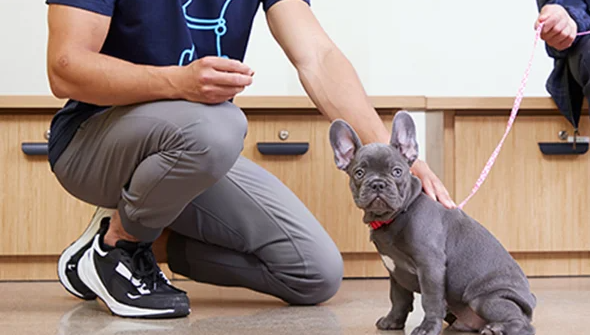Imagine a world where every wag of your puppy’s tail is a celebration of joy. For pet owners and dog lovers, walking their furry friends is more than just a daily chore—it’s an opportunity to strengthen bonds, explore nature, and enjoy some fresh air. Uncover the myriad benefits of dog walking, from health perks to socialization tips, and discover how to make the most of your puppy trails with the best gear and safety practices.
The Health Benefits of Walking Your Dog
Walking your dog is a win-win for both you and your pup. Regular walks provide physical exercise that helps maintain a healthy weight and prevents obesity. According to the American Heart Association, dog owners who regularly walk their pets are 54% more likely to meet the recommended levels of physical activity.
In addition to physical benefits, walking your dog can significantly improve mental health. The repetitive motion of walking can reduce stress and anxiety levels, fostering a sense of calmness. For dogs, the sensory-rich environment of the outdoors—filled with new smells, sights, and sounds—keeps their minds sharp and engaged.
Personal experiences shared by dog owners often highlight the emotional bond strengthened during these walks. Whether it’s a morning jog with your Labrador or an evening stroll with your Chihuahua, the shared activity fosters mutual trust and happiness, creating lasting memories for both parties.
The Importance of Socialization for Puppies
Early socialization is crucial for puppies. Introducing them to different environments, people, and other animals helps shape their behavior and overall well-being. A well-socialized puppy is less likely to develop anxiety, fear, or aggression, making them a happier and more well-adjusted pet.
To ensure effective socialization, start by exposing your puppy to various stimuli in a controlled manner. Allow them to meet new people, experience different sounds, and interact with other dogs. Puppy training classes like those in Draper are an excellent way to facilitate this process, providing structured environments where your puppy can learn to be comfortable around others.
Safety is paramount during socialization. Make sure your puppy’s vaccinations are up to date before introducing them to new environments. Always supervise interactions with other animals to prevent negative experiences that could cause long-term fear or aggression.
Exploring New Trails and Parks
Exploring new trails and parks with your dog can be an exciting adventure. There are numerous dog-friendly trails and parks across various regions, each offering unique landscapes and experiences. For instance, the Central Park in New York City boasts several off-leash areas where dogs can run freely and socialize, while the Griffith Park in Los Angeles offers scenic trails perfect for hiking with your furry friend.
When visiting public spaces with your dog, it’s essential to adhere to safety reminders and etiquette. Always keep your dog leashed in areas where it is required, and be mindful of local wildlife and plant life. Carry waste bags to clean up after your dog, ensuring the park remains enjoyable for everyone.
Exploring new places keeps walks interesting and provides your dog with mental stimulation. Different environments, with their unique smells and textures, can be incredibly enriching for your pup, making each walk a new adventure.
Dog Walking Gear and Gadgets
The right gear can make all the difference in your dog-walking experience. Essential items include a sturdy leash, a comfortable harness, and waste bags. Several innovative gadgets can add convenience and fun for those looking to enhance their walks.
For example, retractable leashes provide flexibility, allowing your dog to explore while still under control. LED collars and leashes are perfect for evening walks, ensuring visibility and safety. For those in colder climates, dog boots, and jackets can protect your pup from harsh weather conditions.
Consider your dog’s size, breed, and specific needs when choosing walking gear. Reading reviews and seeking recommendations from fellow dog owners can help you make informed decisions. Remember, the goal is to ensure comfort and safety for both you and your furry companion.
Safety Tips for Walking Your Dog
Safety should always be a top priority when walking your dog. To prevent accidents and ensure a positive experience, follow these essential safety practices:
Leashing
Always use a leash in public areas to keep your dog under control. This not only prevents your dog from running into dangerous situations but also ensures the safety of other people and animals.
Monitoring the Weather
Be mindful of weather conditions before heading out for a walk. Extreme heat can cause dehydration and heatstroke in dogs, while icy conditions can lead to slips and injuries. Adjust your walking schedule and route based on the weather to keep your dog safe and comfortable.
Encounters with Wildlife
While exploring new trails and parks, you may encounter wildlife. Keep a safe distance and avoid letting your dog chase or interact with wild animals. This protects both your dog and the wildlife, ensuring a harmonious coexistence.
Conclusion
Walking your dog is not just a routine task; it’s an opportunity to bond, explore, and stay healthy together. From the physical and mental health benefits to the joy of discovering new trails, each walk is a chance to create lasting memories with your furry friend.
Happy trails!



